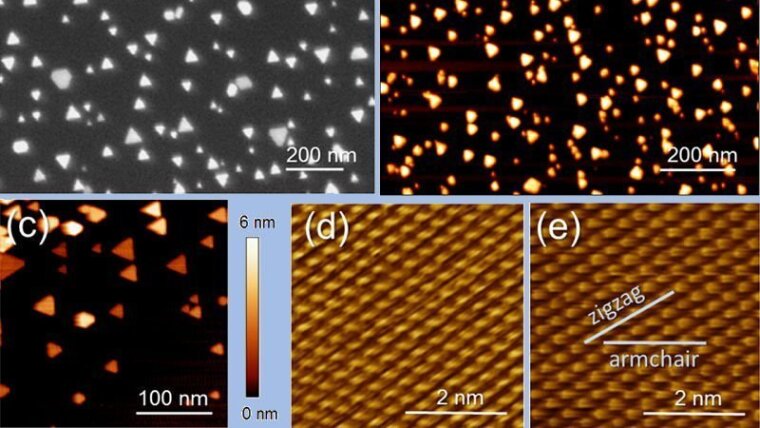
- Research
- Publication
Published:
We have performed AFM nanomanipulation experiments on triangular Au islands (with typical linear size of 25-80 nm) previously grown on a MoS2 surface. These islands are found to move along preferential directions, independently of the angle of attack of the scanning probe. A comparison between molecular-dynamics simulations and atomically resolved STM images prove that these directions correspond to the zigzag alignments of the Mo and S atoms on the substrate. This is related to the observed systematic orientation of the islands, which is in turn a consequence of a sharp energy minimum as a function of each island's angular orientation. This directional-locked motion is entirely different from nanomanipulation involving disordered contact interfaces, where the direction of motion is determined by the island geometry and the scan pattern, and roto-translational motion is observed in arbitrary directions. Besides shedding light on the fundamental mechanisms of friction in the considered class of materials, our results could find important applications in the controlled positioning of metal nanoislands as electrodes for molecular electronics.